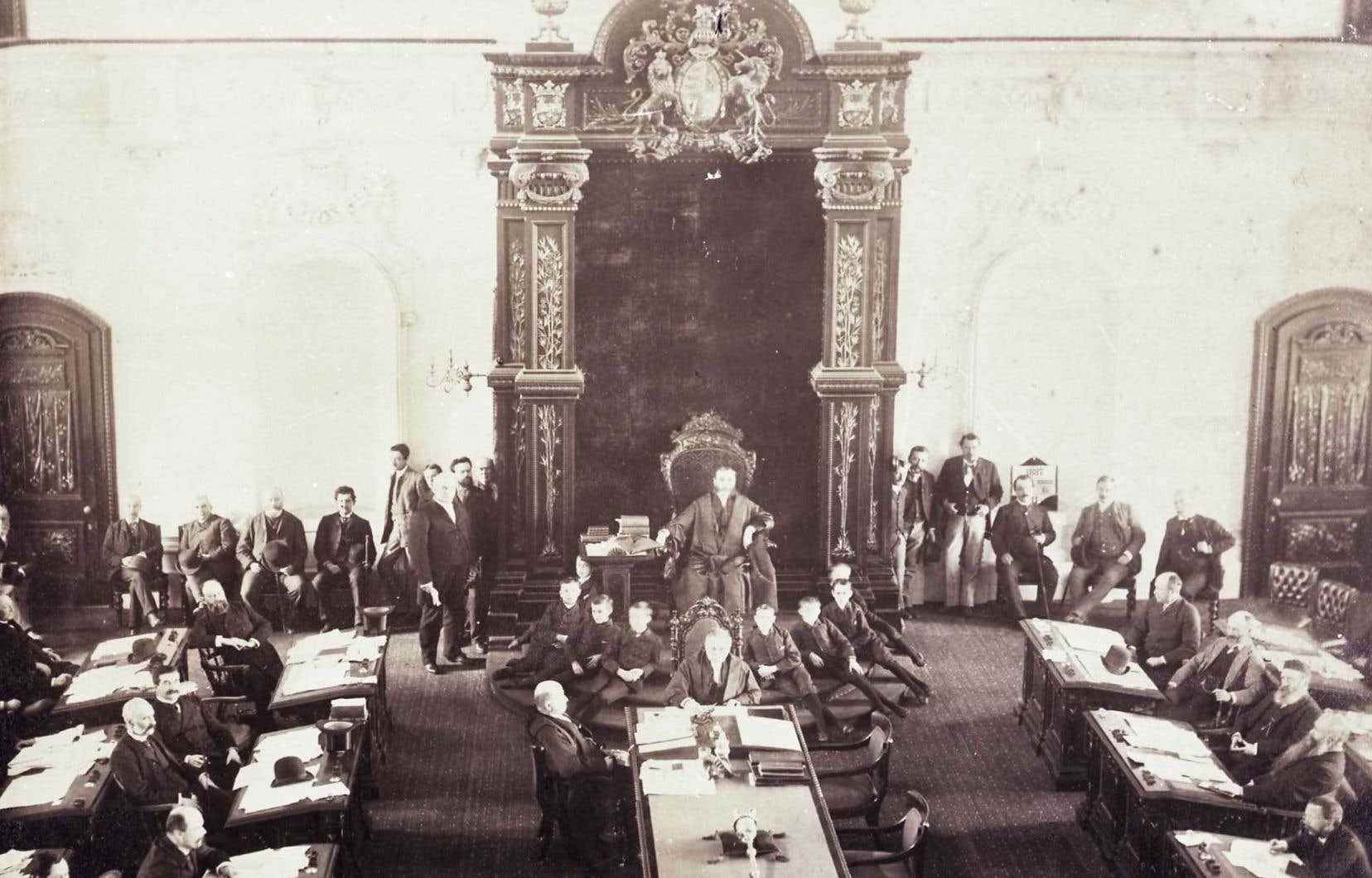The upcoming redevelopment of the Blue Room of the National Assembly will lead to the removal of the last elements of its original furniture designed in 1886 by the architect Eugène-Étienne Taché. The black walnut desks where Honoré Mercier, Henri Bourassa, Maurice Duplessis and René Lévesque have succeeded each other will make way for modern tables if the deputies approve the project.
The Blue Room has reached saturation point, with the number of elected officials nearly doubling since its 3,400-square-foot compound was inaugurated during Victoria’s reign. “Everything indicates that the replacement of furniture is inevitable,” explains the spokesperson for the National Assembly, Béatrice Zacharie. The integration of current desks or their replacement are therefore options,” she adds. The room plans reproduced in a call for tenders for architectural services closed in September, however, leave no doubt about the fate of these desks, witnesses of 135 years of parliamentary history.
Beyond the issues of space and compliance, the reorganization of the Blue Room aims to promote harmony between elected officials from an increasingly fragmented electorate. “The British bedroom model was based on a confrontation-type layout,” laments architect Éric Maurand in the National Assembly Management Plan obtained by The duty under the Access to Information Act.
To counter the deleterious effects of this model, the project leaders analyzed different options, from the “classroom” of the parliament of the Philippines to the “circle” of Nunavut. The call for tenders of the National Assembly, however, retained only two possibilities, either the hemicycle or the horseshoe, which would make it possible to seat up to 134 and 138 deputies respectively.
Inheritance ?
For historian Gaston Deschênes, discarding the current furniture of the Blue Room would be nonsense. “It’s part of the Assembly’s heritage, just like the Speaker’s chair and the sculptures on the walls. If we put modern furniture in there, we change the spirit of the place,” says the specialist in Quebec parliamentarism indignantly in an interview with The duty.
Last May, the outgoing President of the National Assembly, François Paradis, put into perspective the overall value of the furniture designed just 20 years after the creation of the Dominion of Canada in 1867. “Not all the desks you see are original desks”, he had launched from his throne perched on a pedestal.
More than half of the elected officials who will enter the Blue Room on Tuesday will however sit behind one of the 32 double desks or one of the two single desks delivered in 1887 by Montreal cabinetmaker Azarie Lavigne. There is no doubt about their age, the tables having kept an inventory number stamped on the top of their inkwell. To this original batch are added eight double desks designed at the same time.
Until 1923, this furniture was enough to accommodate all elected officials. The desks subsequently shaped to take into account the gradual increase in the number of MNAs also have heritage value, according to an expert report from the Center de conservation du Québec obtained by The duty. “Some are very professionally crafted and are important additions to the collection,” reads the redacted February 7, 2022 document.
Furniture in the Salon Bleu would also include desks salvaged from the Salon Rouge in 1968 when the Legislative Council was abolished. The question is however debated, the “Quebec senators” having probably taken their desks when leaving the premises. The duty came across one of them a few years ago at an antique shop on Saint-Paul Street in Quebec City. The piece of furniture designed by cabinetmaker Philippe Vallière was offered for the modest sum of $6,950.
Prestige
The desks of the deputies could experience the same fate as the table of the clerks of 1886, which occupied the center of the Blue Room until 2007, stored in favor of a “technological” piece of furniture. Fifteen years later, the latter is paradoxically suffering from early obsolescence, as indicated by the Management Plan of the National Assembly. “It does not seem to fully satisfy users, especially on the ergonomic aspect”, we read in this report which is already considering its replacement.
For its part, the throne of the president of the room is not threatened by the project of recasting. It must, on the contrary, be maintained in “axial symmetry” with the clock located at the other end of the room, as suggested by an information note from the Research and Archives Department of the National Assembly. Its displacement would “distort the balance and coherence” of the room, while its removal would have “impacts on the prestige of the Chamber and of the presidency”.
Manufactured in 1970, the current throne is however more recent than the hundred-year-old desks of the deputies, its predecessors having been carried away by their occupant at the time of their departure, as was the custom. It would thus have been replaced 25 times since 1886.
It was on this half-century-old throne that Corporal Denis Lortie surrendered to Sergeant-at-Arms René Jalbert in 1984 after killing 3 and wounding 13 with machine gun fire. The soldier, who had arrived in advance at the question period, had also let off steam by targeting the empty desks located in the axis of that of the Prime Minister at the time, René Lévesque. “Security didn’t want us to see them so as not to impress us,” recalls former MP Yves Duhaime, whose office had been shattered by bullets.
The redevelopment of the Blue Room must follow the restoration of its frescoes and the installation of a raised floor to hide the wiring. “The work has not yet been authorized, insists Béatrice Zacharie. An analysis is underway and will be presented to the deputies of the 43e legislature when it is [achevée]. »
